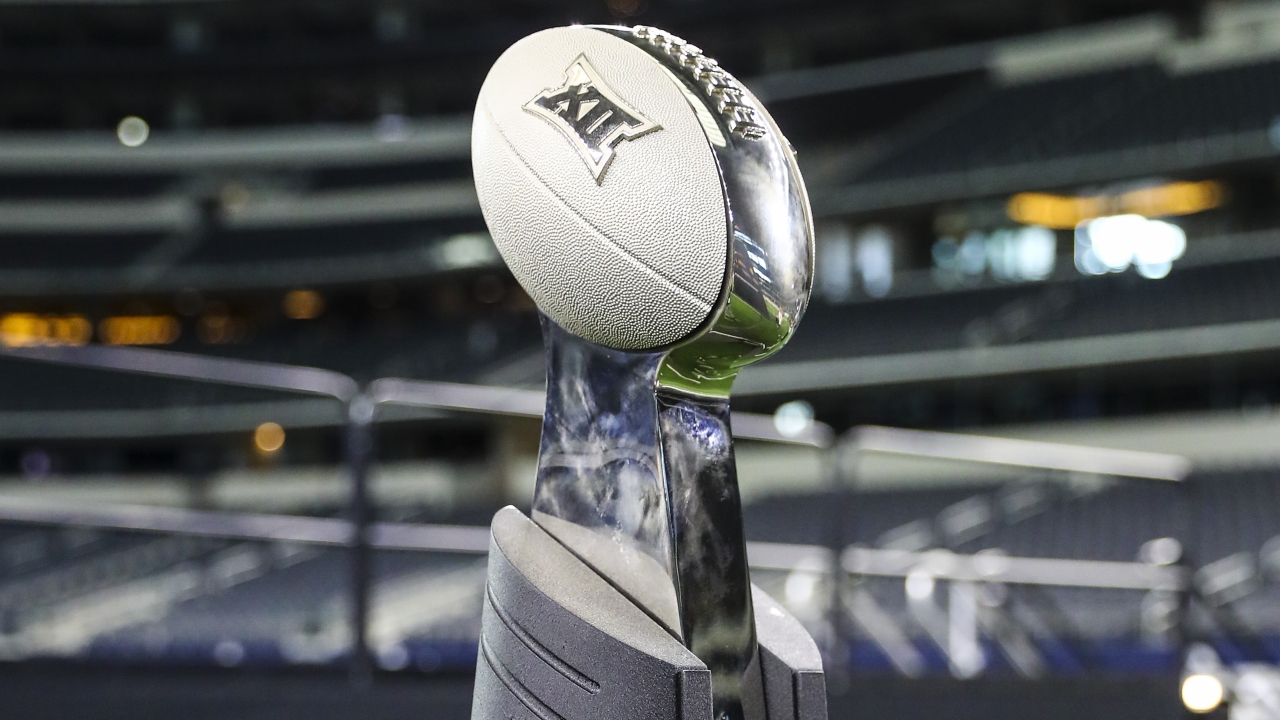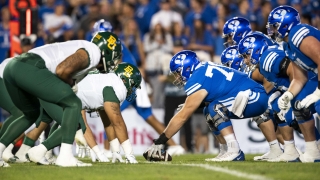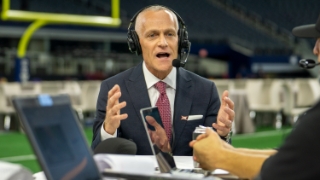
Big 12 TV Negotiations Could Be Better Off After Baylor vs. BYU
The ESPN television viewership of the Baylor and BYU game that started at 10:15 pm ET on Saturday evening caught the attention of anyone closely watching along and working to determine which of the Big 12 and Pac 12 are higher in the pecking of the major conferences after its prize programs were picked off in the last 12-plus months by the Big 10 and SEC.
With 2.37 million viewers, the game between two future Big 12 opponents was comparable to the rating of USC vs. Stanford at 2.96 million viewers, a game that was aired nationally on ABC at 7:30 pm ET, a prime time slot for the network.
To put the viewership numbers in perspective, for an ABC primetime evening window, the 2.96 million viewers on Saturday for USC and Stanford would have ranked 35th of 42 for that same window when looking at the 2019, 2020 and 2021 seasons. Of the seven ranked below on the list, four were additional Pac 12 matchups in the same window including Oregon vs. Washington, Colorado vs. Utah, Utah vs. Washington and Stanford vs. Oregon.

Contrastly, the Baylor vs. BYU rating was the highest in the same ESPN 10 p.m. CT time slot since Texas vs. California in 2016 and the only slot with viewership over 2.0mm dating back through at least the 2019 season.
“Heck, yeah, it does when you’re really negotiating with ESPN and FOX,” Baylor Director of Athletics Mack Rhoades said when asked about the TV numbers for the game on SicEm365 Radio. The ratings outdrew a number of Pac 12 matchups in the same time slot over recent years including Washington State vs. Oregon, Stanford vs. USC, UCLA vs. Arizona, Arizona vs. Oregon, USC vs. Arizona State and so on.
“We do pay attention to it and we're certainly proud that we were a part of that… So yeah, those numbers matter, they're important and glad that that many people tuned in.”
The contest between Baylor and BYU had been on the schedule for a number of years, but the timing of the game, as pointed out by Rhoades, couldn’t have been more perfect. As the Pac 12 continues to show that its biggest issue is being landlocked to the west, the Big 12 put on display the value to ESPN of BYU playing league games that linked multiple time zones together, bringing in consistent viewership that previously was untapped.
Like only adding a single Texas team to the Pac 12, the addition of solely BYU wouldn’t help the Big 12 realize its full potential of going west. Adding BYU allows the Big 12 to scratch the surface of potential matchups between teams located in the Mountain, Central and Eastern Time Zones, but there is still a lot more left on the table.
For that reason, we read new Big 12 Commisioner Brett Yormark’s recent comments about looking to the Pacific Time Zone for more additions to the league. Rhoades, who was heavily involved in the process of hiring Yormark to replace long-time commissioner Bob Bowlsby, clarified Yormark’s comments about looking to the PT on Tuesday in his interview with SicEm365 Radio.
“I think it's either or both and I think it remains to be seen,” Rhoades said. “I don't think specifically Mountain or specifically Pacific, but it could be one or the other, or both. Time will tell.”
While “both” could mean adding a program like the University of Arizona in Tucson, Arizona, a location that does not utilize Daylight Saving Time and is part of both the PT and MT time zones, it could also mean adding multiple additional programs that are located in one or the other.
Catching up to the money that the Big 10 and SEC are set to receive in coming years is unrealistic, but controlling the size of the gap is possible by being smart. Unique marketing, advertising, sponsorships and the like will help, but tying together high-quality football programs across multiple time zones is a real solution. On a larger scale, that’s the reason the Big 10 added UCLA and USC.
When Baylor played BYU on Saturday, not only did it bring the Baylor fan base into a later viewing window, but the interest from the perspective of Oklahoma State, Houston, TCU, Texas Tech, Iowa State, Kansas State and other Big 12 programs also grew because of relevancy. Simple and not too hard to understand, right? It’s why the quality football game between Baylor and BYU sits on top of the “Pac 12 after dark” ESPN 10 p.m. ET window despite neither program being in the Pac 12.

Could that be a significant selling point for the Big 12 to ESPN?
“I think it certainly can be and could be, and when we think about the future and particularly the right matchups, and what conference membership looks like. All of that,” Rhoades added. “But, yeah, that could be a really, really positive time slot for us moving forward.”
As the Big 12’s remaining eight and the four new additions stand strong, it’s difficult to forecast the full potential of any more additions for five, 10 or 15 years down the road. Not because it can’t be calculated with a formula, but because an evolving variable — how a fan base from West Virginia or UCF react to watching a league game beginning at 10:15 pm local time — can’t be calculated, at least not initially. And that is what makes the idea of a 16-team conference centralized in CT with wings to the PT/MT and ET so darn intriguing for the future.
Note: Future Big 12 member Central Florida’s ESPN2 game against the ACC’s Louisville on Friday evening drew a total of 1.85 million viewers. The viewership total had higher viewership than recent Friday evening ESPN or ESPN2 conference games between Virginia Tech and Boston College (1.215), Stanford and Arizona State (1.134), Wake Forest and Virginia (1.113), Arizona State and Arizona (1.02), Syracuse and Louisville (1.03) and Louisville and Georgia Tech (1.02).
It’s a massive unknown, but so long as a steady dose of the programs remain engaged and passionate, and they will, there is a draw to watching that window that was not there with an isolated Pac 12. It was easier for an East Coaster to check the box score in the morning to see that (hypothetical) insane comeback by USC over Arizona State that hasn’t meant anything in the grand scheme of college football since 2008.
A driving factor in the Big 12 growing is the expanded College Football Playoff that was recently agreed upon. The decision takes pressure off of the talks of a two-conference super league that would become exclusive rather than inclusive.
“We need to expand,” Rhoades said. “We think that the model that was unveiled a year ago, year and a half ago, was carefully well thought out, and we need to go and we need to move.”
From his perspective, Rhoades sees the momentum to get the expanded field ready to go for 2024, which could even ultimately loosen the strings for programs like Oregon and Washington to make the decision to move to the Big 12 after feeling the need to get into that exclusive club that is the B1G with a four-team playoff.
“I feel like with the expanded playoff number of teams and access, because I think the access is important, this idea of FBS splitting into two different divisions, two separate championships —there's been the talk of the Group of Five having their own — I think that goes away. And I think the (CFP) expansion probably solidifies FBS inclusive moving forward.”
As always, money will be the driving factor for all decisions made by any westward program that is (or isn’t, depending which author you read) in talks with the Big 12. An expanded CFP makes it less likely than any program needs to make a move, but a large enough difference in the recognized television money will talk the talk before even discussing the potential in the future.
Saturday might be the first sign of where the money will be headed as the dust settles.
